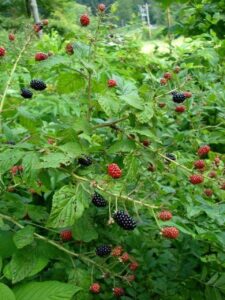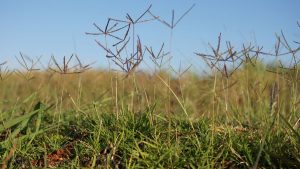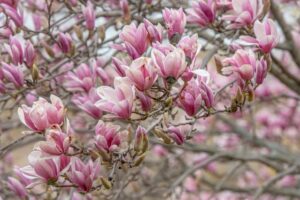Crimson Fire Loropetalum. Chinese Fringe Flowers. This plant is native to China, Japan, and south-eastern Asia. It is a dark red shrub for a smaller area all year round. The deep ruby-red leaves fade from beautiful red to dark burgundy.

Crimson Fire Loropetalum profile
Genus
Crimson Fire Loropetalum comes from small trees in the witch-hazel family, Hamamelidaceae. It is originated from China, Japan, and south-eastern Asia.
Growth and size
The tallest height the plant can reach is only 2 to 4 feet (120 cm) which is ideal for small spaces. Regularly the plant does not get above 6 feet. It is semi-dwarf and dwarf specimens. The spread of the leaves can go up to 4 feet (120 cm).
The plant is best grown in warmer climates such as those found in USDA plant hardiness zones 7 to 10.
Common name
It has a common name of Chinese Fringe Flowers and Strap flowers. It has scientific names Crimson Fire Loropetalum and Loropetalum Chinense.
Flowers
The plant produces neon pink flowers start to bloom during the spring. during the blooming season the fringed, hot pink flowers that are very attractive to butterflies and hummingbirds.
How to grow
Light requirement
The plant can tolerate living under partial shade. It can even thrive well under the full sun.
Temperature
The plant will live in areas that experience 90 to 120 heat days (AHS Heat Zone 8-9) every year where temperatures exceed 85°F. It is recommended to plant and grow the plant in the very cold areas.
Plant usage
The plant has many usages including beds, borders, hedges, screens, patio, pots, containers, small gardens, and wall-side borders.
Soil
The Crimson Fire Loropetalum or Chinese Fringe Flowers needs fertile and rich soil. The soil must contain nitrogen, phosphorus, and potassium (NPK).
The soil must also consist of minerals including boron, chlorine, cobalt, copper, iron, manganese, magnesium, molybdenum, sulfur and zinc. These minerals will enhance plant overall health and nutrition.
The soil can be slightly acidic, moist and well-draining. Chinese Fringe Flowers is an acid-loving plant.
The pH of the soil must be between 5.1-5.5. This level should be maintained.
If the Chinese Fringe Flowers are not growing because of too much alkalinity in the soil, you must raise acid levels.
Before making the soil acidic, measure a soil test using soil test kits.
The fastest and easiest method to make the soil more acidic is to add sphagnum peat. Just add two-inch of peat to the topsoil in. You can also add them around the plants or during planting.
The other method would be to water the soil with a solution of 2 tablespoons vinegar to a gallon of water. The method will adjust the pH in container plants also.
Another method is by using acidifying fertilizers to raise acidity levels. Fertilizers that contain ammonium nitrate, ammonium sulfate, or sulfur-coated urea will do the job.
In some conditions, applying flowers of sulfur to the soil is effective. But it will take several months to achieve the job.
Watering
Water the plant during its growing season. Water the plant completely when planted. Water occasionally because this plant prefers soil moist but not soggy.
Water once or twice per week until the plant is matured. You must water these plants deeply during drought periods or hot summer months.
Fertilizer
Feed these plants in spring only. Use a slow-release fertilizer made for evergreens at the beginning of spring after the first blooming.
Always apply fertilizer at the drip-line of the plant. Do not apply directly under the plant. This could burn the feeder roots. Water it immediately after fertilizer application.
The best fertilizers must be organic fertilizer that has the ability to promote root growth, improve nutrient absorption, and improve soil quality.
The fertilizer must help trees resist disease, safe for the environment, and can be used around kids and pets.
Pruning
To maintain the shape and the size of the plant, you may have to prune the plant. The best time to prune is in spring right away after blooming. Pruning at this time will enable lush flowering next spring.
Do not cut the plant too much because the plant may die back.
Always wear gardening gloves, long sleeves, and long pants when pruning.
Before start practicing the pruning, plan your best form of shrub, to fit the garden. Make the garden unique by making a broom, windswept, informal upright or cascade.
You can begin pruning just a few branches. When you notice healthy growth, prune a few more.
The plant tends to develop in a wide horizontal spread and a dense branch structure. After new growth emerges, it will be fast-growing.
How to propagate Crimson Fire Loropetalum
Seeing one beautiful Chinese Fringe Flowers plant would temp you to propagate more plants for family or friends.
Propagate from seeds
If you want to grow from seeds, prepare containers with high-quality potting soil. Sow the seeds about 1/2 inch below the soil surface. Water them regularly to keep the soil moist.
You may propagate in late winter or early spring. The best place to propagate is in a warm greenhouse.
Propagate from cuttings
Take 4 to 6-inch tip cuttings from the mother plant. Do he cutting in the summer.
Prepare a moist potting soil. Plant the cuttings in the potting soil. for best result, apply bottom heat. Wait until the roots emerge.
Repotting
You can re-pot the plant every year. Re-pot into moist and well-draining soil.
Pest and disease
Chinese Fringe Flowers are pest and disease and pest resistant.
Aphids, galls, and Blight (Anthracnose fungus) will infest the plant
Aphids can be eliminated using Neem oil. You just spray the solution to the plant.
For galls, you have to remove affected areas and get rid of them.
Blight will cause black spots on shoots and the new foliage of your plant. This happens after a few days of rain the spring.
Solve this problem by cutting away infected parts of the plant and improve the drainage of the soil.


